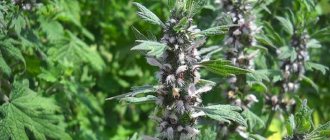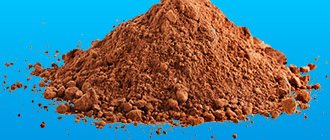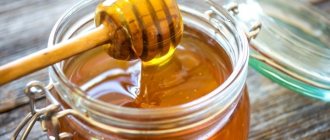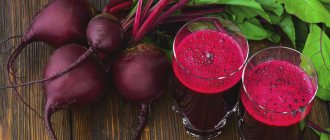Turmeric (Curcuma longa) grows in India, China, Australia, and Peru. It is used as part of a spice mixture in Asian and South American cuisines and is part of curry mixtures. It is also called “yellow ginger” for its medicinal properties and beneficial effects on health. How does turmeric help with blood pressure - does it increase or decrease blood pressure? Let's get a look.
Useful properties of spices
Research has proven the health benefits of the spice. This is not a panacea for everything, but if you use it wisely, your body will thank you. But when using turmeric for hypertension, be careful! It may have side effects.
Yellow spice is a good way to prevent a number of diseases, but its healing effects include the treatment of certain diseases. Here are the 12 most significant health effects:
- Prevention of oncology. Curcumin, the main component of turmeric, is an antioxidant; its anti-inflammatory properties are one of the cancer prevention factors.
- Treatment of cancer. Turmeric is a natural anticarcinogen.
- Neutralization of free radicals. The spice has an antioxidant effect, which is important in the fight against free radicals.
- Relief of arthritis symptoms. Expressive anti-inflammatory properties help reduce the symptoms of arthritis (pain, swelling), acts preventively against this disease.
- Immune support. The medicinal effects of turmeric include strengthening the immune system.
- Weight loss support. The spice definitely affects your metabolic rate and weight loss.
- Body cleansing. Turmeric has been proven to help cleanse the blood.
- Acceleration of disease treatment and recovery due to antibiotic and antiseptic properties.
- Acceleration of wound healing. Curcumin has a positive effect on the treatment of skin diseases.
- Reducing high cholesterol. Most experts recommend taking turmeric to lower cholesterol.
- Protecting the heart and blood vessels from diseases that are one of the biggest “killers” of the modern population.
- Prevention of Alzheimer's disease. To date, no cure has been developed for this disease. But the strong antioxidant effect of the spice will help prevent the disease or slow down its development.
Benefits of Turmeric for Hypertension
Now let’s figure out how turmeric affects blood pressure. This ability of the spice is provided by its main active component – the substance curcumin. To date, this chemical compound has been studied quite well. Numerous clinical trials involving volunteers have shown that regular consumption of spices not only helps maintain blood pressure within normal limits, but also strengthens the circulatory system. It should be noted that the spicy product has a complex effect on the entire cardiovascular system:
- reduces blood viscosity, thereby preventing the formation of blood clots;
- cleanses the blood of toxic products;
- improves the condition of vascular walls, increasing their tone;
- reduces cholesterol levels;
- saturates myocardial tissue with nutrients;
- increases hemoglobin;
- strengthens the body’s overall defense;
- improves cellular metabolism.
Good to know! Scientists have experimentally proven that turmeric acts similarly to antihypertensive drugs for hypertension. Moreover, the spice is practically not inferior in effectiveness to the best drugs. Therefore, the spicy product is equally useful to use both for treatment and for preventive purposes.
Turmeric and lowering blood pressure
So how does turmeric work – does it increase or decrease blood pressure? It has an anti-inflammatory effect, dilates blood vessels, therefore lowers high blood pressure, protects against heart and vascular diseases. A 2014 study found that curcumin supplementation reduced high blood pressure and prevented the development of vascular disease in mice that were artificially induced to have temporary hypertension. According to an analysis in the International Journal of Cardiology, curcumin in animal trials slowed and improved heart muscle health, preventing heart failure, a common complication of hypertension.
Features of use for hypertension
If you have high blood pressure, you can use the spicy root:
- in crushed form, washed down with water;
- adding powder to desserts and drinks;
- preparing sauces and seasonings for meat and fish dishes from the crushed root.
When using turmeric for medicinal purposes, it is necessary to monitor the condition of the skin, as symptoms of an individual allergic reaction may appear.
Spicy powder does not belong to the group of main drugs that affect blood pressure. The spice is used to help the body cope with hypertension along with medications. But if the increase in pressure does not occur constantly and hypertension has not taken life-threatening forms, then turmeric should be consumed regularly.
The drug raises vitality, but not blood pressure.
When taking spices, be sure to monitor the body’s reaction. It is necessary to choose a dosage of the drug, such a recipe, so that curcumin benefits the body. Not everyone will be able to immediately feel an improvement, but after a month you can see that turmeric has a positive effect on blood pressure, normalizing its values.
The benefits of spices for a healthy heart and blood vessels
From the concept of a healthy combination of turmeric and blood pressure (whether the spice increases or decreases blood pressure values - see above), comes the fact that curcumin has a positive effect on the cardiovascular system. Heart disease is the most common disease worldwide. According to research, the beneficial substance helps reverse degenerative processes in the heart area. One of the factors that can influence them is improving the functioning of the endothelium, the “lining” of blood vessels. Endothelial dysfunction is a common cause of heart disease. Poor endothelium can lead to impaired blood pressure regulation and blood clotting. Curcumin leads to improved endothelial function, similar to physical activity. Its antioxidant capacity is also important to protect the heart and blood vessels.
Why is hypertension dangerous?
But before studying the medicinal properties of the popular seasoning, it is worth learning a little more about the reasons that lead to changes in pressure in the bloodstream. In most cases, hypertension is recorded, that is, high blood pressure. In modern medicine, in the classification of diseases, this pathology is better known as arterial hypertension or hypertension. The disease is characterized by a steady increase in blood pressure levels exceeding the norm - 140/90 mm Hg. pillar
Of course, each age group has its own normal parameters, so doctors give such a serious diagnosis to patients taking into account this criterion and other individual characteristics of the body. It would be appropriate to note here that today hypertension is one of the most common pathologies of the cardiovascular system. According to the latest WHO data, approximately a third of the world's adult population suffers from this disease.
How to take turmeric for hypertension, recipes and dosage
The recommended daily dosage for an adult is 1 tsp. To achieve maximum therapeutic effects, yellow spice is recommended to be consumed daily (at least 3 times a week). For elderly people and children under 6 years of age, the dosage should be reduced to ½ tsp. in a day. However, in older people, the dose is determined individually, if ½ tsp. will be small, it can be increased.
Important! Do not consume turmeric on an empty stomach!
You can also mix the spice (¼ tsp) with kefir (250 ml), coconut oil (1 tsp), honey and cinnamon (to taste). You will receive a healing drink, which, on the contrary, is recommended to be consumed on an empty stomach. You can also drink it at night.
Fresh roots
Fresh root is used peeled, chopped or grated. It is added to pickled vegetables, spicy snacks, and serves as a preservative.
Powder
The powder is most often used as part of a spice mixture. Curcumin's medicinal properties have been found to increase when combined with other spices.
Important! The combination with pepper is most effective for hypertensive patients.
Turmeric tea
Tea is the most common way to use turmeric for blood pressure; The drink recipe is simple. Boil ½ liter of water. Add 1 tsp. spices. Leave for 10 minutes.
Recipes
A person who decides to use turmeric as an additional medicine for high blood pressure can prepare the following dishes and drinks from it:
- ginger tea: mix turmeric powder with ginger root, brew one tablespoon of the resulting mixture with boiling water, drink aromatic tea twice a day, half a glass (to make the drink sweeter, you can add a teaspoon of honey);
- tonic drink : dilute half a teaspoon of turmeric in a glass of warm boiled water and add a little freshly squeezed lemon juice, drink the finished drink once a day in the morning on an empty stomach;
- candies: you need to combine one tablespoon of poppy seeds, sesame and flaxseeds, grind these ingredients in a coffee grinder and add to them two tablespoons of turmeric and a tablespoon of natural thick honey, from the resulting mass you need to form several small candies (4-6 pieces) , ready-made sweets can be stored in the refrigerator; it is recommended to eat one serving of healthy treats per day;
- spicy honey: for 50 grams of honey you need to take a tablespoon of turmeric, mix the ingredients until smooth, spicy honey can be consumed 2-3 times a day, one teaspoon as a dessert or as an additive to tea.
Sweet foods and drinks made from turmeric may be harmful for people watching their blood sugar levels.
Precautions, contraindications, side effects
Since turmeric does not increase blood pressure, but lowers it, caution when consuming is necessary for hypotensive people - people suffering from low blood pressure (but, according to consumer reviews, about ½ teaspoon per day does not aggravate the symptoms of hypotension). It is not recommended to take spices and dietary supplements with curcumin for people using medications to thin the blood - this may increase the effect of the medications and increase the risk of bleeding. Caution is needed for people with poor iron absorption and anemia - when consuming, it is necessary to replenish iron reserves!
Contraindications
Turmeric has a wide range of therapeutic effects, but some people should not consume it.
Bright orange spicy seasoning is contraindicated for:
- hypotonic syndrome;
- type 1 diabetes;
- urolithiasis and cholelithiasis;
- acute renal failure;
- hepatitis;
- hemophilia;
- individual intolerance to the product.
Pregnant women and nursing mothers should take this seasoning with extreme caution. Also, the spicy spice can cause harm to people prone to food allergies. If there is an excess of turmeric, a person may experience a severe allergic reaction, accompanied by itching and rashes on the skin, breathing problems and other unpleasant symptoms.
Before taking turmeric for medicinal purposes, hypertensive patients should definitely consult a doctor and find out everything about the possible side effects and contraindications of this spice.
Effect on pressure
The use of turmeric activates blood flow, improves the functioning of the cardiovascular and urinary systems, thereby lowering blood pressure and maintaining its normal levels.
The spice has a complex effect:
- reduces blood viscosity, prevents the formation of blood clots;
- turmeric lowers cholesterol, restores vascular endothelium, which prevents the deposition of atherosclerotic plaques;
- strengthens the myocardium, increases the strength and speed of blood flow;
- normalizes water-salt balance;
- improves kidney function, stimulates the removal of fluid from the body, relieves swelling;
- cleanses the blood of toxins and waste;
- replenishes potassium deficiency, which relieves vascular spasms and promotes dilation of arteries;
- rich in iron, increases hemoglobin, improves blood composition.
Turmeric improves the metabolism of cells and tissues, strengthens the body's defenses.
For hypertension
Animal studies were conducted to identify the relationship between spice and high blood pressure. Experimental mice had their blood pressure artificially increased, then curcumin (the main active ingredient of turmeric) was injected. Within an hour the values dropped to normal.
Scientists noted that the effect of curcumin is similar to antihypertensive drugs that inhibit the production of angiotensin II, which constricts blood vessels. Turmeric reduces its synthesis, the arteries relax, dilate, and blood pressure normalizes.
Chronic inflammation of the arteries and veins leads to loss of elasticity. Fragile blood vessels are a significant factor that increases the risk of developing hypertension. Research results have shown that turmeric relieves vascular inflammation, restores the elasticity of coronary arteries, arterioles, and capillaries.
Conclusion: Turmeric can be used to lower blood pressure and prevent hypertension. In advanced forms of arterial hypertension, spice should be considered as an additional means of primary therapy.











